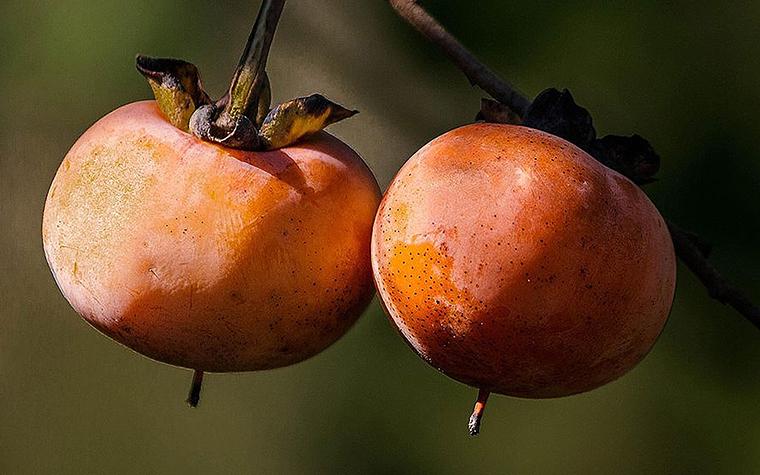COLUMBIA, Mo. – After biting into an unripe persimmon, most experience a reaction called “pucker mouth.” Some liken it to having their tongue covered with fur. The offending substances behind this sensation are tannins, naturally occurring compounds that are so astringent they have the power to turn an unsuspecting bite into a moment of instant regret, says University of Missouri Extension horticulturist David Trinklein.
American persimmon (Diospyros virginiana) is a deciduous tree in the Ebenaceae (ebony) plant family. Native to the central and eastern United States, it grows 30 to 80 feet high and 20 to 35 feet wide. The name persimmon comes from putchamin, a phonetic rendering of the name used for this fruit by the Algonquin tribe of Native Americans.
Locally, persimmons often are called “first-frost fruit” because of how long they take to ripen. When ripe, the skin of a persimmon should be soft, and the fruit should feel delicate when gently pressed. During the ripening process, persimmon’s tannins dissipate, rendering the fruit sweet and palatable.
Persimmons are dioecious, meaning there are separate male and female trees. The trees flower from spring to early summer and produce fruit that ripen in the fall. Containing 15% sugar when ripe, persimmons are a food source for many birds and mammals. Persimmon fruit have an enlarged calyx at their base and a distinctive beak at their end.
Another distinctive characteristic of this tree is its thick, dark gray bark, sometimes called “alligator bark,” which is divided by furrows into square blocks resembling a checkerboard. Fall leaf color is showy and ranges from yellow to orange to bright red.
Persimmons can be grown as an ornamental tree or in naturalized areas for wildlife. With spectacular autumn foliage and fruit that extends the harvest late into the fall, persimmon trees are an excellent addition to an edible landscape, Trinklein said. Fruit often remain on a tree after its leaves have fallen. Unaffected by freezing temperatures, they provide an attractive addition to a winter landscape.
Ozark and Appalachian folklore maintain that the shape of the embryo found inside the kernel of a ripe persimmon seed can predict the type of winter to come. If the embryo’s shape resembles a spoon, expect a lot of snow. A fork indicates a mild winter. A knife predicts a very cold winter. As with most folklore, the predictive power of persimmon seeds lacks scientific backing.
Although considered safe to eat, persimmon consumption carries a few caveats. First, it is best not to pick persimmons from a tree but instead gather fallen fruit from the ground. The older a persimmon is, the lower its tannin content will be. Also, persimmons should not be eaten on an empty stomach; the tannins can react with stomach acid to form a hard, indigestible mass called a phytobezoar. Eating them with other food helps dilute the tannins and prevent this reaction, reducing the risk of a painful stomach or intestinal blockage.
Persimmons can be eaten fresh, dried or in baked goods and savory dishes. There are several health benefits associated with their consumption. In addition to the dietary fiber, persimmons are rich in vitamins, minerals and antioxidants, each of which can benefit human health. For example, vitamin C helps support the immune system and protects against heart disease. Additionally, persimmons can help keep your eyes healthy. One serving has more than half the recommended daily amount of vitamin A, which is important to vision.
